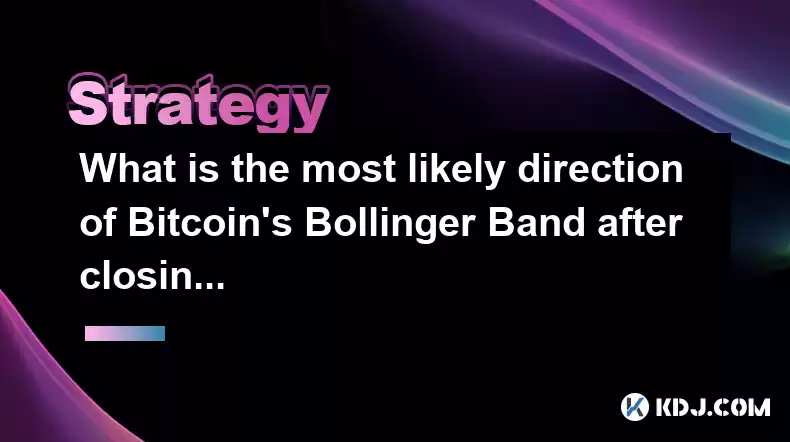-
 Bitcoin
Bitcoin $117500
2.15% -
 Ethereum
Ethereum $3911
6.19% -
 XRP
XRP $3.316
10.79% -
 Tether USDt
Tether USDt $1.000
0.01% -
 BNB
BNB $787.2
2.24% -
 Solana
Solana $175.2
4.15% -
 USDC
USDC $0.9999
0.00% -
 Dogecoin
Dogecoin $0.2225
8.40% -
 TRON
TRON $0.3383
0.28% -
 Cardano
Cardano $0.7868
6.02% -
 Stellar
Stellar $0.4382
9.34% -
 Hyperliquid
Hyperliquid $40.92
7.56% -
 Sui
Sui $3.764
7.63% -
 Chainlink
Chainlink $18.48
10.66% -
 Bitcoin Cash
Bitcoin Cash $582.1
1.88% -
 Hedera
Hedera $0.2601
6.30% -
 Avalanche
Avalanche $23.33
4.94% -
 Ethena USDe
Ethena USDe $1.001
0.02% -
 Litecoin
Litecoin $122.3
2.04% -
 UNUS SED LEO
UNUS SED LEO $8.969
-0.27% -
 Toncoin
Toncoin $3.339
0.86% -
 Shiba Inu
Shiba Inu $0.00001287
4.30% -
 Uniswap
Uniswap $10.43
7.38% -
 Polkadot
Polkadot $3.861
5.08% -
 Dai
Dai $1.000
0.02% -
 Bitget Token
Bitget Token $4.513
3.41% -
 Monero
Monero $267.7
-6.18% -
 Cronos
Cronos $0.1499
4.14% -
 Pepe
Pepe $0.00001110
5.15% -
 Aave
Aave $284.9
8.28%
What is the most likely direction of Bitcoin's Bollinger Band after closing?
Bitcoin's Bollinger Bands help predict price movements based on volatility; traders use them with RSI to confirm overbought or oversold conditions.
Apr 19, 2025 at 05:42 pm

Bitcoin's Bollinger Bands are a widely used technical analysis tool that helps traders understand the volatility and potential price movements of Bitcoin. The Bollinger Bands consist of a middle band, which is a simple moving average (SMA), and two outer bands that are standard deviations away from the middle band. The most likely direction of Bitcoin's Bollinger Band after closing depends on various factors, including the current market conditions, the position of the price relative to the bands, and the overall trend.
Understanding Bollinger Bands
Bollinger Bands are a volatility indicator created by John Bollinger. They are plotted two standard deviations away from a simple moving average, usually over a 20-day period. The middle band is the SMA, while the upper and lower bands are calculated as follows:
- Upper Band: SMA + (2 Standard Deviation)
- Lower Band: SMA - (2 Standard Deviation)
These bands expand and contract based on the volatility of the price. When the market is volatile, the bands widen, and when the market is calm, the bands narrow.
The Squeeze and Expansion
One of the key concepts in using Bollinger Bands is the squeeze and expansion. A squeeze occurs when the bands come closer together, indicating low volatility. This often precedes a period of increased volatility, where the bands will expand. Conversely, an expansion indicates high volatility, and the bands will be far apart.
When Bitcoin's price is closing near the upper band, it suggests that the market might be overbought, and a reversal could be imminent. Conversely, if the price is closing near the lower band, it might indicate an oversold condition, suggesting a potential upward movement.
Price Position and Trend
The position of Bitcoin's price relative to the Bollinger Bands can give clues about the likely direction after closing. If the price is consistently closing above the middle band, it suggests a bullish trend. Conversely, if the price is consistently closing below the middle band, it suggests a bearish trend.
- Above the Middle Band: If Bitcoin's price is closing above the middle band, it is likely to continue its upward trend, especially if it is not touching the upper band. However, if it is consistently touching or closing at the upper band, a pullback might be expected.
- Below the Middle Band: If Bitcoin's price is closing below the middle band, it is likely to continue its downward trend, especially if it is not touching the lower band. However, if it is consistently touching or closing at the lower band, a rebound might be expected.
Breakouts and Reversals
Breakouts occur when Bitcoin's price moves outside the Bollinger Bands. A breakout above the upper band can signal a strong bullish move, while a breakout below the lower band can signal a strong bearish move. However, these breakouts are often followed by a return to within the bands, which can be seen as a reversal.
- Breakout Above the Upper Band: If Bitcoin's price closes above the upper band, it might continue to rise in the short term. Traders should be cautious, as a reversal back within the bands can be expected soon.
- Breakout Below the Lower Band: If Bitcoin's price closes below the lower band, it might continue to fall in the short term. Traders should be cautious, as a reversal back within the bands can be expected soon.
Using Bollinger Bands with Other Indicators
While Bollinger Bands can provide valuable insights, they are most effective when used in conjunction with other technical indicators. For example, combining Bollinger Bands with the Relative Strength Index (RSI) can help confirm overbought or oversold conditions.
- RSI and Bollinger Bands: If the RSI is above 70 and the price is closing near the upper Bollinger Band, it might indicate an overbought condition, suggesting a potential reversal. Conversely, if the RSI is below 30 and the price is closing near the lower Bollinger Band, it might indicate an oversold condition, suggesting a potential rebound.
Practical Application of Bollinger Bands
To effectively use Bollinger Bands for predicting Bitcoin's direction after closing, traders can follow these steps:
- Identify the Trend: Determine whether the current trend is bullish or bearish based on the position of the price relative to the middle band.
- Watch for Squeezes and Expansions: Look for periods of low volatility (squeezes) that might precede a significant price move. Conversely, be aware of high volatility (expansions) that might signal a potential reversal.
- Monitor Breakouts: Pay attention to breakouts above the upper band or below the lower band, as these can signal strong moves. Be prepared for potential reversals back within the bands.
- Combine with Other Indicators: Use Bollinger Bands in conjunction with other indicators like the RSI to confirm signals and improve the accuracy of your predictions.
Frequently Asked Questions
Q: Can Bollinger Bands predict Bitcoin's price with certainty?
A: No, Bollinger Bands are a technical analysis tool that provides insights into potential price movements based on volatility. They do not predict price movements with certainty and should be used in conjunction with other indicators and analysis methods.
Q: How often should I check the Bollinger Bands for Bitcoin?
A: The frequency of checking Bollinger Bands depends on your trading strategy. For short-term traders, checking daily or even hourly might be necessary. For long-term investors, weekly or monthly checks might be sufficient.
Q: Are Bollinger Bands more effective in certain market conditions?
A: Bollinger Bands are particularly useful in volatile markets, where they can help identify periods of low and high volatility. They are less effective in very stable markets, where the bands might remain narrow for extended periods.
Q: Can Bollinger Bands be used for other cryptocurrencies besides Bitcoin?
A: Yes, Bollinger Bands can be applied to any cryptocurrency or financial instrument. The principles remain the same, but the effectiveness might vary depending on the specific asset's volatility and market conditions.
Disclaimer:info@kdj.com
The information provided is not trading advice. kdj.com does not assume any responsibility for any investments made based on the information provided in this article. Cryptocurrencies are highly volatile and it is highly recommended that you invest with caution after thorough research!
If you believe that the content used on this website infringes your copyright, please contact us immediately (info@kdj.com) and we will delete it promptly.
- Tron's Sell-Off Spurs Altcoin Shift: What's Next for TRX?
- 2025-08-08 08:30:12
- Sleep Token's US Takeover: Thornhill Rides the 'Even In Arcadia' Wave
- 2025-08-08 08:30:12
- FTT Token's Wild Ride: Creditor Repayments vs. Market Drop - A New Yorker's Take
- 2025-08-08 07:10:12
- Floki Crypto Price Prediction: Riding the Robinhood Rocket or Just a Meme?
- 2025-08-08 07:15:12
- EigenLayer, Restaking, and Ethereum: Navigating the Hype and the Hazards
- 2025-08-08 06:30:12
- Super Bowl 59: Jon Batiste to Jazz Up the National Anthem
- 2025-08-08 06:30:12
Related knowledge

How to avoid common crypto investment mistakes?
Jul 13,2025 at 01:35am
Understanding the Risks of Crypto InvestmentInvesting in cryptocurrency can be highly rewarding, but it also comes with significant risks. One of the ...

What is a long-short crypto strategy?
Jul 15,2025 at 10:56am
Understanding the Basics of a Long-Short Crypto StrategyA long-short crypto strategy is an investment approach where traders simultaneously take long ...

What is a long-short crypto strategy?
Jul 11,2025 at 01:28pm
Understanding the Basics of Long-Short Crypto StrategyA long-short crypto strategy is an investment approach where traders take both long and short po...

How to use the RSI indicator for crypto?
Jul 12,2025 at 03:56pm
Understanding the RSI Indicator in Cryptocurrency TradingThe Relative Strength Index (RSI) is a momentum oscillator used to measure the speed and chan...

Is copy trading a good strategy for crypto beginners?
Jul 12,2025 at 08:28am
Understanding Copy Trading in the Cryptocurrency MarketCopy trading is a strategy where novice traders replicate the trades of experienced investors a...

How to build a crypto portfolio with $1000?
Jul 13,2025 at 08:14pm
Understanding the Basics of Cryptocurrency InvestmentBuilding a crypto portfolio with $1000 starts with understanding the fundamentals of cryptocurren...

How to avoid common crypto investment mistakes?
Jul 13,2025 at 01:35am
Understanding the Risks of Crypto InvestmentInvesting in cryptocurrency can be highly rewarding, but it also comes with significant risks. One of the ...

What is a long-short crypto strategy?
Jul 15,2025 at 10:56am
Understanding the Basics of a Long-Short Crypto StrategyA long-short crypto strategy is an investment approach where traders simultaneously take long ...

What is a long-short crypto strategy?
Jul 11,2025 at 01:28pm
Understanding the Basics of Long-Short Crypto StrategyA long-short crypto strategy is an investment approach where traders take both long and short po...

How to use the RSI indicator for crypto?
Jul 12,2025 at 03:56pm
Understanding the RSI Indicator in Cryptocurrency TradingThe Relative Strength Index (RSI) is a momentum oscillator used to measure the speed and chan...

Is copy trading a good strategy for crypto beginners?
Jul 12,2025 at 08:28am
Understanding Copy Trading in the Cryptocurrency MarketCopy trading is a strategy where novice traders replicate the trades of experienced investors a...

How to build a crypto portfolio with $1000?
Jul 13,2025 at 08:14pm
Understanding the Basics of Cryptocurrency InvestmentBuilding a crypto portfolio with $1000 starts with understanding the fundamentals of cryptocurren...
See all articles

























































































